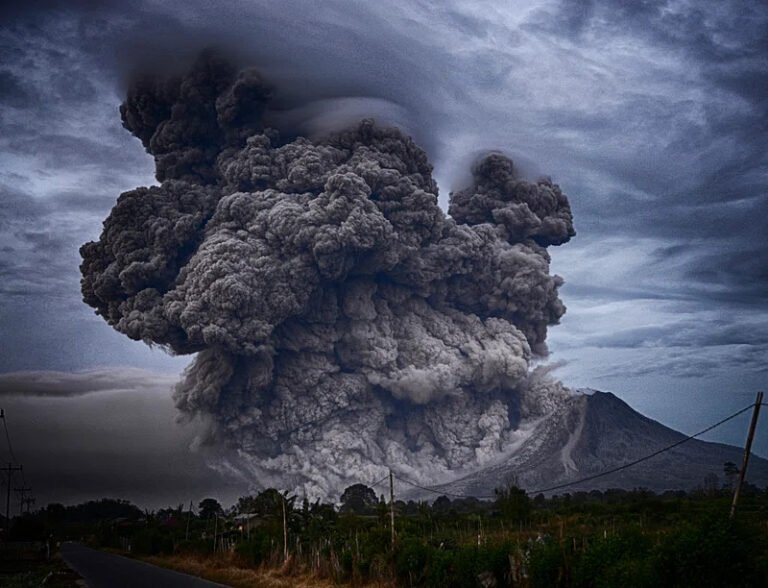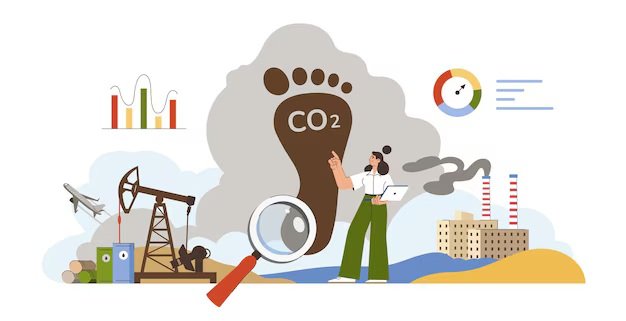Symbiotic Relationships in Ecology: Mutualism, Parasitism, and Commensalism
Nature is built on diverse relationships. Every living thing, from tiny bacteria to massive whales, relies on others to survive. Some of these relationships help both sides, while others come at a cost. Scientists call this deep connection symbiosis, when different species live together in ways that shape life on Earth.
Symbiosis isn’t just a scientific concept—it’s happening all around us. Bees pollinate flowers while collecting nectar, ticks feed on animals to survive, and barnacles attach to whales for a free ride. These interactions may seem small, but they play a huge role in keeping ecosystems balanced.
In this guide, we’ll look at the three main types of symbiosis: mutualism, where both species benefit; parasitism, where one benefits while harming the other; and commensalism, where one benefits while the other remains unaffected. Through real-life stories, expert insights, and scientific research, we’ll dive into how these relationships shape the natural world.
Understanding symbiosis helps us appreciate what keeps our environment in balance and the invisible connections that sustain thriving ecosystems. Let’s explore these important partnerships and their significance for the future of our planet.
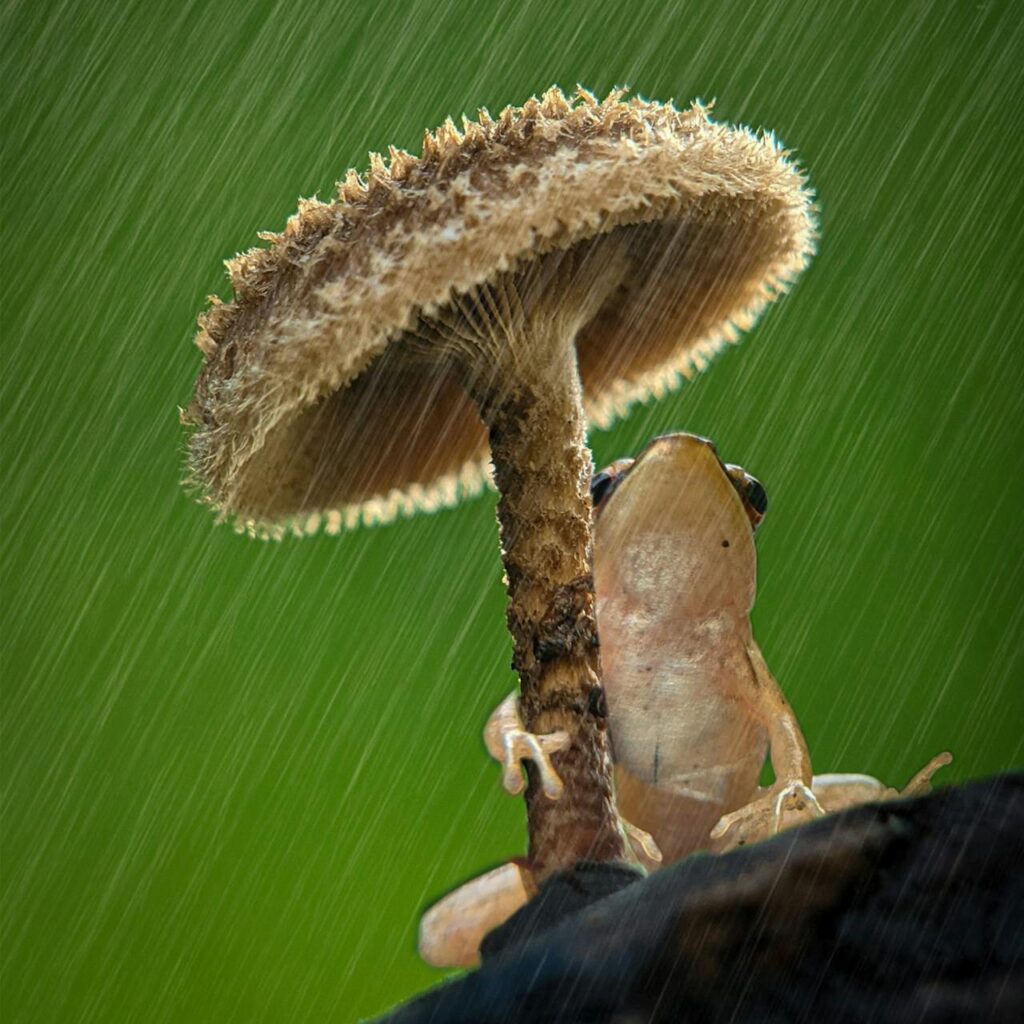
In This Article
- 1. What is Mutualism? A Relationship of Mutual Benefit
- 2. Parasitism: The Costly Side of Symbiosis
- 3. Commensalism: One Benefits, the Other is Unaffected
- The Bigger Picture: How Symbiosis Shapes Our World
- Conclusion: How Can We Support Nature’s Balance?
1. What is Mutualism? A Relationship of Mutual Benefit
Defining Mutualism
Mutualism is a type of symbiotic relationship where both species involved benefit. It’s nature’s version of teamwork, where two different organisms help each other survive. In a world where competition is often seen as the driving force of evolution, mutualism is a reminder that cooperation can be just as powerful.
Think of it this way: in human society, friendships, business partnerships, and communities thrive when people support each other. Nature works in a similar way. From tiny bacteria in our gut to massive forests, life is filled with partnerships that allow species to share resources, protection, or services. These relationships help ecosystems stay balanced and productive.
Examples of Mutualism in Nature
Pollinators and Flowers: A Dance for Survival
One of the most famous examples of mutualism is the relationship between bees and flowering plants. Bees fly from flower to flower, collecting nectar for food. But as they do so, they unknowingly transfer pollen from one flower to another, helping plants reproduce. Without this process, many plants wouldn’t be able to produce seeds or fruits.
But there’s a problem. Pollinators like bees are disappearing at an alarming rate due to habitat destruction, pesticides, and climate change. This isn’t just bad news for bees—it’s bad news for us too. A 2016 study published in Nature Communications found that 75% of the world’s leading food crops depend, at least in part, on pollinators (Joseph Millard et al., 2021). Without bees, our food supply could be in serious trouble.
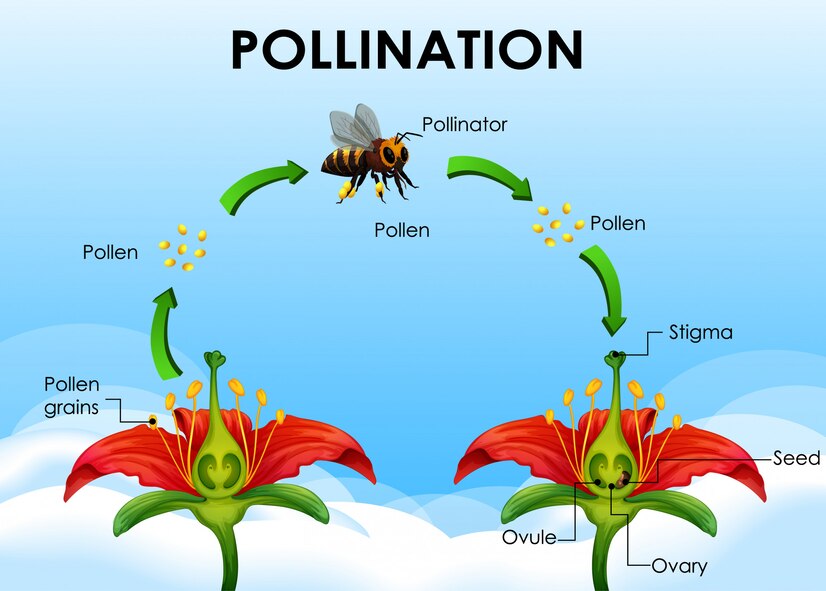
Clownfish and Sea Anemones: An Unlikely Friendship
If you’ve ever watched Finding Nemo, you probably remember the bright orange clownfish darting around a sea anemone. This isn’t just a cute animation—it’s a real-life example of mutualism in action.
Sea anemones have stinging tentacles that can paralyse small fish. But clownfish have a special mucus coating on their skin that makes them immune to the stings. This allows them to live safely among the tentacles, protected from predators. In return, the clownfish helps the anemone by chasing away fish that might eat its tentacles and providing nutrients through its waste.
Personal Story: A diver off the coast of Indonesia once watched a tiny clownfish bravely defending its anemone from a much larger butterflyfish. Despite the size difference, the clownfish darted around aggressively, forcing the intruder to swim away. It was a clear example of how even the smallest creatures can play an essential role in nature’s balance.
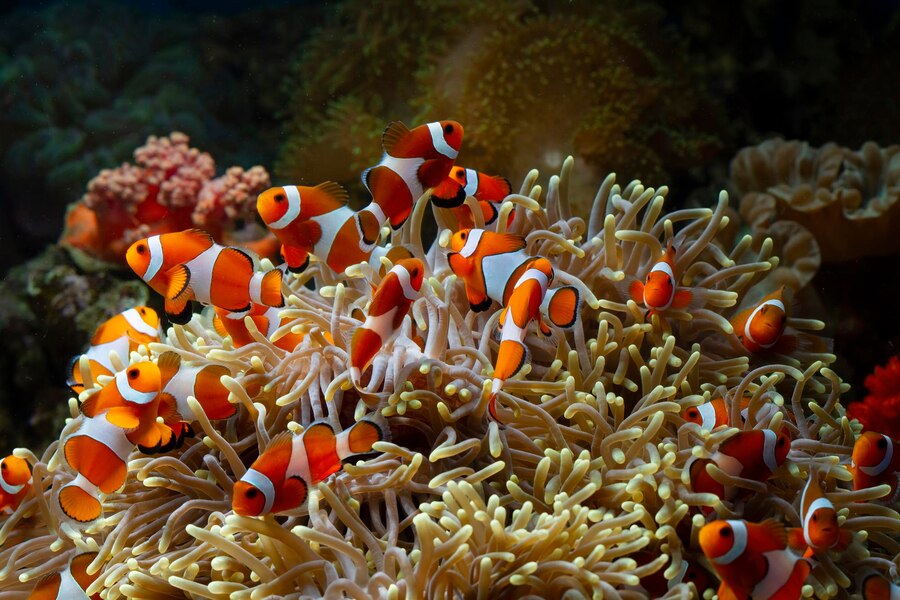
Mycorrhizal Fungi and Plants: Nature’s Underground Internet
Beneath the forest floor, an invisible network connects trees and plants in ways we are only beginning to understand. This network is made up of mycorrhizal fungi, which form a mutualistic relationship with plant roots.
The fungi help plants absorb water and nutrients more efficiently by extending their underground network. In return, plants provide the fungi with sugars produced through photosynthesis. This relationship is crucial for forest ecosystems, allowing plants to share resources and even “communicate” through chemical signals.
Expert Quote: “Without mycorrhizal fungi, many forests wouldn’t exist. They are nature’s underground internet, connecting trees and helping them communicate,” says Dr. Suzanne Simard, an ecologist famous for her research on forest ecosystems.
Why Mutualism Matters
Mutualistic relationships don’t just make nature more interesting—they keep our planet functioning.
- Biodiversity Boost: Mutualism helps support a wide variety of species, ensuring ecosystems remain healthy and diverse.
- Economic Impact: Pollinators like bees contribute over $235 billion annually to global agriculture (Khalifa S a. M, et al. Insects 2021.).
- Ecosystem Stability: Without mutualistic relationships, entire ecosystems could collapse. If fungi disappeared, forests would struggle. If pollinators vanished, our food supply would be at risk.
Mutualism shows us that cooperation, not just competition, is a driving force in nature. It’s a reminder that everything in the natural world is connected—and that protecting these relationships is key to maintaining a healthy planet.
Learn More: Bioaccumulation vs. Biomagnification
2. Parasitism: The Costly Side of Symbiosis
Sometimes, survival means taking from others, even at their expense. This is the essence of parasitism—a relationship where one organism, the parasite, benefits while the other, the host, suffers. Unlike predators that kill their prey instantly, parasites often live off their hosts for extended periods, sometimes even for life.
Parasitism is found everywhere in nature, from the tiniest bacteria to large mammals. While it might seem cruel, it plays a vital role in shaping ecosystems. Parasites influence population control, force species to adapt, and sometimes even drive evolution. Let’s explore some fascinating examples of parasitism in action, showing just how deeply this relationship is woven into the natural world.
Examples of Parasitism in Nature
1. Ticks and Mammals: Bloodsuckers with a Hidden Threat
If you’ve ever gone hiking in the woods and found a small, dark lump latched onto your skin, you’ve met one of nature’s most common parasites—the tick. Ticks survive by feeding on the blood of mammals, birds, and even reptiles. While the bite itself may seem harmless, ticks carry dangerous diseases, including Lyme disease.
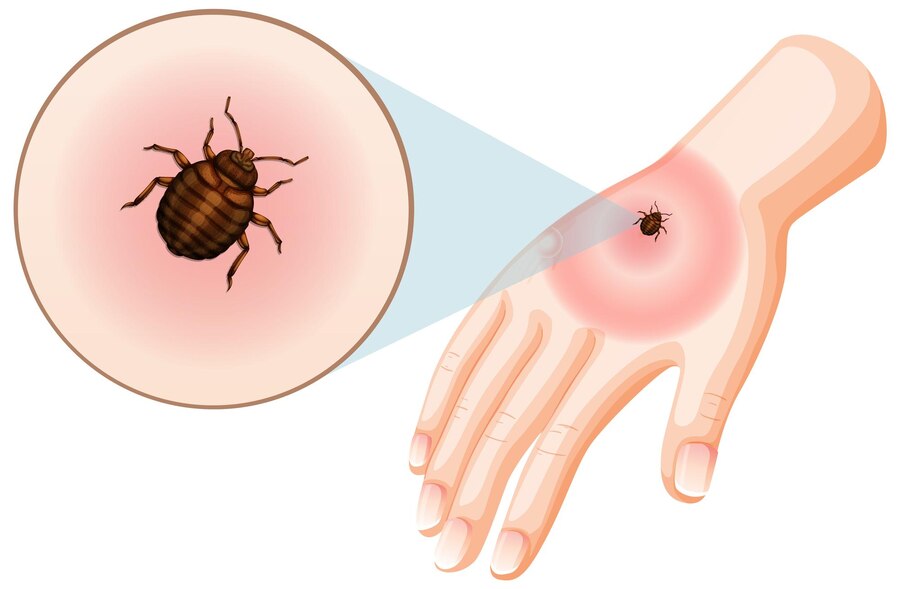
Case Study: The Spread of Lyme Disease
A 2023 study published in Pathogens revealed a concerning trend: tick populations are increasing, leading to a surge in Lyme disease cases across North America (De La Fuente et al., 2023). Scientists link this rise to climate change, which allows ticks to thrive in areas that were once too cold for them. This means that more people and animals are at risk than ever before.
How does this affect us? If you spend time outdoors, wearing long sleeves, using insect repellents, and checking for ticks afterwards can help prevent bites and reduce the risk of disease.
2. Cuckoo Birds: Nature’s Sneakiest Tricksters
Imagine spending weeks building a home for your children, only to have a stranger sneak in, swap your baby for their own, and leave you to care for an impostor. That’s exactly what cuckoo birds do.
Female cuckoos lay their eggs in the nests of unsuspecting birds, tricking them into raising their young. The cuckoo chick hatches earlier and grows faster than the host’s real offspring, often pushing the other eggs or chicks out of the nest. The host parents unknowingly devote all their energy to feeding the cuckoo chick, never realising they’ve been deceived.
A birdwatcher in the UK once observed a tiny warbler tirelessly feeding a giant cuckoo chick almost twice its size. The warbler had no idea the chick wasn’t its own—it simply responded to the loud begging calls, instinctively providing food. This scene, while fascinating, also highlights the cost of parasitism: the warbler’s real chicks likely didn’t survive.
3. Cordyceps Fungi: The Zombie-Makers of the Insect World
If you think parasites can’t get any stranger, meet the cordyceps fungus, a real-life nightmare for insects. This fungus infects ants, spiders, and other insects, hijacking their nervous systems and turning them into zombies.
Once infected, the ant behaves strangely, climbing to an elevated position. There, it clings to a leaf or branch and dies as the fungus slowly consumes its body. Eventually, the fungus erupts from the ant’s head, releasing spores that infect new victims.
Expert Insight from Dr. David Hughes
“Cordyceps fungi are like real-life horror stories in the insect world. They turn their hosts into zombies before killing them, ensuring the fungus can spread as widely as possible,” says Dr. David Hughes, an entomologist specializing in parasitic fungi.
While this might sound terrifying, cordyceps play an important ecological role by regulating insect populations and preventing any single species from becoming too dominant.
The Ecological Role of Parasites
It’s easy to think of parasites as villains, but they aren’t purely destructive. They serve several important roles in ecosystems:
- Population Control – Parasites prevent certain species from overpopulating, keeping ecosystems balanced. For example, ticks help regulate deer populations, ensuring they don’t grow beyond what their habitat can support.
- Driving Evolution – Parasites push their hosts to develop better defences. Over time, animals evolve stronger immune systems, better grooming behaviours, or even resistance to parasites. This evolutionary arms race has shaped species for millions of years.
- Ecosystem Stability – Some parasites help maintain biodiversity by influencing food chains and species interactions. For example, some fish parasites prevent certain fish species from dominating coral reefs, allowing other marine life to thrive.
Learn More: 10 Endangered Animals That Help the Environment
3. Commensalism: One Benefits, the Other is Unaffected
Understanding Commensalism in Simple Terms
Commensalism falls into the last category. It’s a type of relationship where one species benefits, while the other remains unaffected. Unlike mutualism, where both partners gain something, or parasitism, where one suffers, commensalism is more like a hitchhiker catching a free ride without bothering the driver.
You’ve probably seen commensalism in action without even realising it. Birds building nests in trees, tiny fish clinging to sharks, or barnacles attached to whales—these are all examples of one species benefiting while the other doesn’t even notice. It’s a fascinating concept, showing how life adapts and finds ways to survive without direct cooperation or conflict.
Barnacles on Whales: The Ultimate Free Ride
If you’ve ever seen a whale up close, you might have noticed rough, white patches on its skin. Those aren’t natural markings—they’re barnacles! These tiny crustaceans attach themselves to whales, gaining a free ride through nutrient-rich waters. For the barnacle, this is a huge advantage. It doesn’t have to move or expend energy searching for food because the whale does all the travelling.
Does the Whale Care? Not really. The barnacles don’t burrow into the whale’s skin or suck its blood like parasites. They simply latch onto the surface, filter-feeding as the whale swims through the ocean. The whale carries them around without gaining or losing anything.
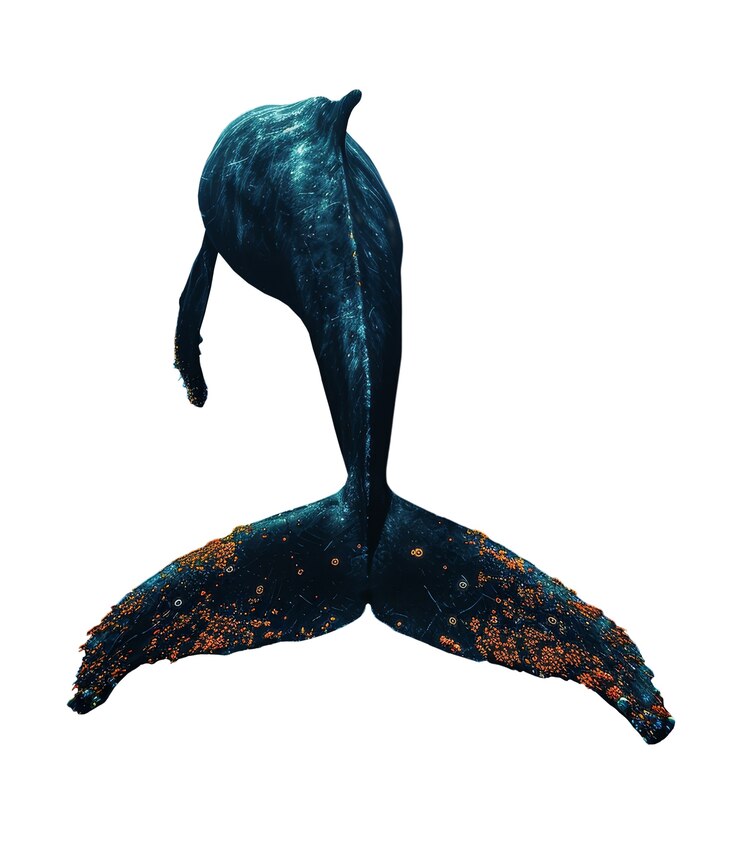
A Marine Biologist’s Observation
Marine biologist John Zardus, studying humpback whales in the Pacific, once observed a curious pattern. Some whales had hundreds of barnacles, while others had almost none. She wondered why. After years of research, she discovered that some whales were better at rubbing against rocks or breaching (jumping out of the water) to shake off the barnacles. Others simply didn’t bother, carrying their hitchhikers for years.
While barnacles don’t hurt whales, too many can create extra drag, making swimming slightly less efficient. But in most cases, the whales don’t even notice.
Epiphytes on Trees: Nature’s Balcony Plants
Imagine living in a dense rainforest where sunlight barely reaches the ground. If you’re a plant, this can be a big problem. Some plants, known as epiphytes, have figured out a clever solution: instead of growing in the soil, they attach themselves to trees, using them as support to reach the sunlight.
How Epiphytes Benefit: Epiphytes, like orchids and ferns, grow high in the trees, absorbing moisture from the air and relying on rain for nutrients. This gives them an advantage over ground-dwelling plants that struggle for sunlight.
Does the Tree Mind? Not at all! Epiphytes don’t take nutrients from the tree like parasites do. They just use the trunk and branches as a platform. The tree continues growing as usual, completely unaffected by its leafy passengers.
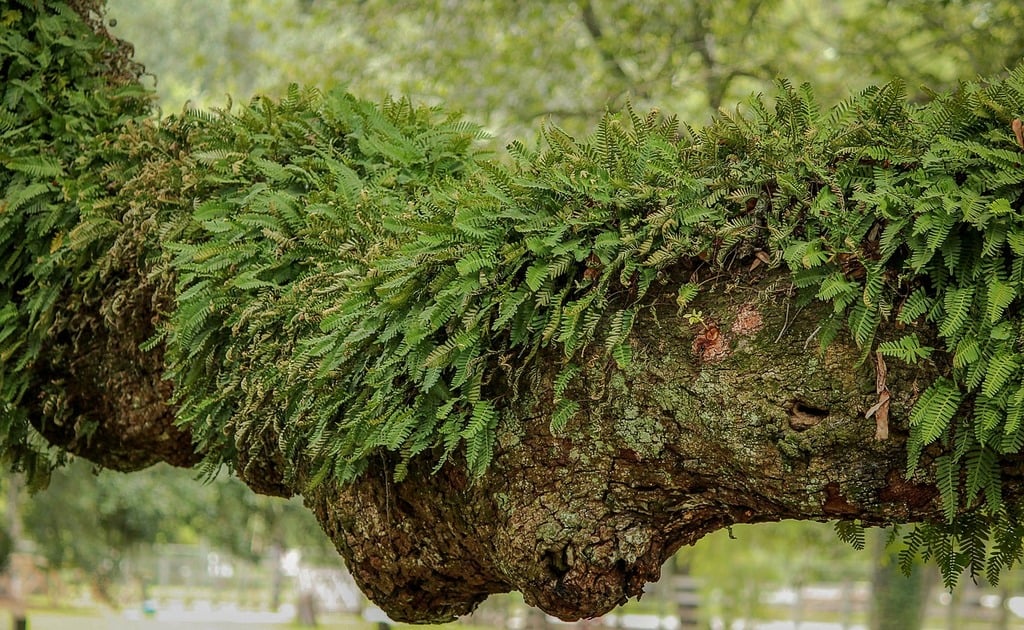
The Role of Epiphytes in Rainforests
According to Project Amazonia: Characterisation – Biotic – Epiphytes, epiphytes play a crucial role in rainforest ecosystems. By creating microhabitats, they provide shelter for insects, frogs, and even small mammals. In other words, while the tree itself isn’t affected by the epiphytes, other creatures benefit from the extra greenery.
Remoras and Sharks: The Ocean’s Ultimate Freeloaders
If you’ve ever seen a shark gliding through the ocean with smaller fish stuck to its belly, those are remoras, also known as suckerfish. They attach themselves to sharks using a special suction disc on their heads, allowing them to hitch a ride wherever the shark goes.
What’s in It for the Remoras?
- Free transportation – Instead of swimming long distances on their own, they let the shark do the hard work.
- Easy access to food – Remoras feed on scraps from the shark’s meals, saving them the effort of hunting.
Does the Shark Even Notice? Nope! Unlike parasites that drain energy from their hosts, remoras don’t take anything directly from the shark. They don’t feed on its blood or flesh—they just stick around and grab leftovers.
What Scientists Say: Renowned marine biologist Dr. Sylvia Earle once said, “Remoras have perfected the art of freeloading, but sharks don’t seem to mind.” This sums up commensalism perfectly—one species gets a great deal, while the other just goes about its life, unaffected.
Why Commensalism Matters
At first glance, commensalism might not seem as exciting as mutualism or parasitism, but it plays an important role in nature. It allows species to survive and thrive in tough environments without harming others. Here’s why it’s important:
- It Encourages Biodiversity – By taking advantage of existing structures (like trees or animals), species can exist in places they otherwise couldn’t.
- It Saves Energy – Instead of struggling for survival, organisms like remoras or epiphytes find efficient ways to live with minimal effort.
- It Shows Nature’s Balance – Not every relationship in the wild is about competition or survival of the fittest. Some creatures simply find ways to coexist.
Learn More: What is Human-Environment Interaction? Examples and Impacts
The Bigger Picture: How Symbiosis Shapes Our World
Symbiosis isn’t just something that happens in the wild—it’s a part of our everyday lives. From the bacteria in our gut to the food on our plates, we rely on nature’s partnerships more than we realise.
Take our digestive system, for example. Trillions of bacteria live inside us, helping break down food, absorb nutrients, and keep harmful microbes in check. Without them, we wouldn’t be as healthy. This is a perfect example of mutualism, where both sides benefit.
But not all symbiotic relationships are helpful. Some are harmful, like parasites. Malaria, caused by Plasmodium parasites, affects over 240 million people every year (WHO Report, 2023). Parasites like these have shaped human history, pushing us to develop medicines and preventive measures.
Even farming depends on symbiosis. Many farmers now use mycorrhizal fungi to help plants absorb water and nutrients naturally, reducing the need for chemical fertilisers.
However, human actions are putting these delicate relationships at risk. Climate change, habitat destruction, and pesticide use threaten mutualistic networks, like bees pollinating crops. If we disrupt these connections, our food systems and ecosystems could suffer. Understanding and protecting symbiosis isn’t just about nature—it’s about securing our own future.
Conclusion: How Can We Support Nature’s Balance?
- Protect Pollinators: Reduce pesticide use and plant native flowers to support bee populations.
- Prevent Parasitic Spread: Use responsible pet care to control ticks and fleas.
- Preserve Natural Habitats: Conserving forests helps maintain mutualistic relationships between plants and fungi.
- Support Scientific Research: Understanding symbiosis can help us develop sustainable solutions for agriculture and medicine.
Symbiotic relationships remind us that life is interconnected. Whether through cooperation, exploitation, or passive coexistence, nature thrives on these intricate partnerships. By respecting and preserving these relationships, we ensure a healthier planet for all species—ourselves included.

